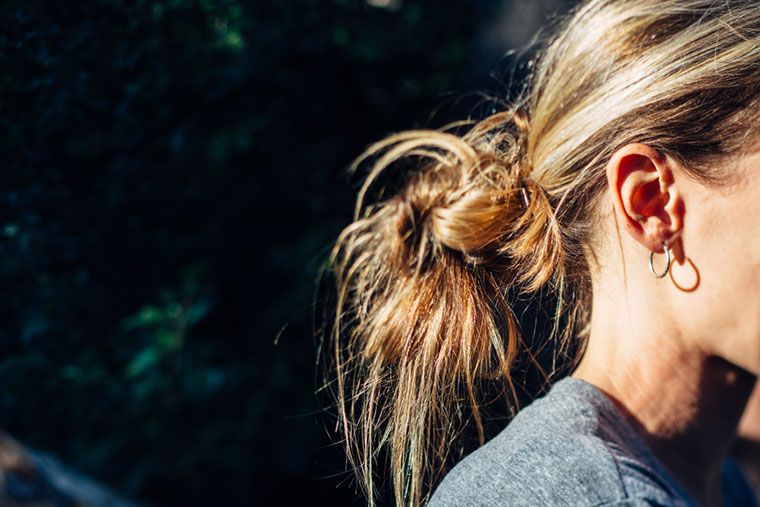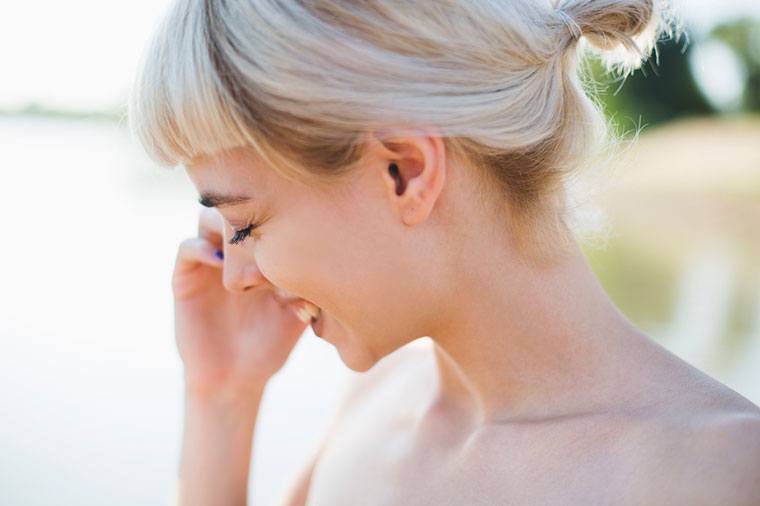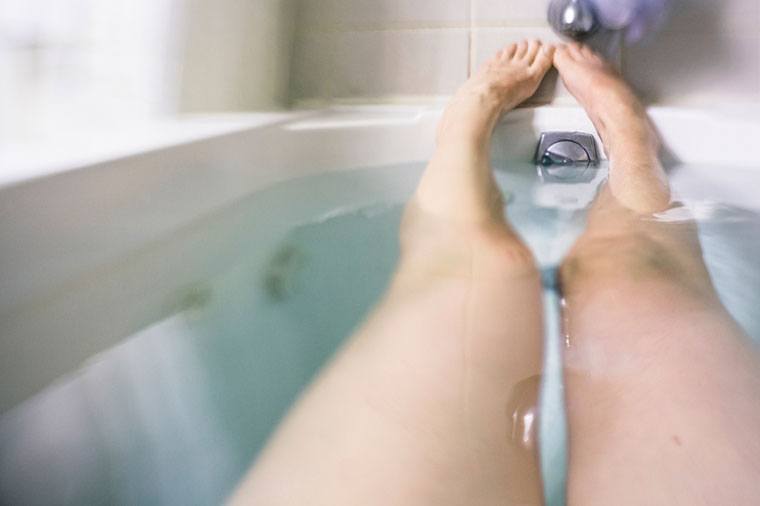How to Properly Clean Your Ears, Because You Probably Are Cleaning Them Wrong
Let's talk about hygiene: Washing your body is a no-brainer—the hardest part about that is deciding which natural soap scent you prefer. Then there's the debate about how often you should really shampoo, but it's not like you're going to completely destroy your locks if you wash your hair every day.
Your ears, on the other hand? That's where most people are pretty clueless.
From Q-Tips to ear candling (yup, it's a thing), there are a lot of things that people will try in the name of cleanliness—but not a lot of clarity as to what actually works. I consulted a specialist—AKA an otolaryngologist—to get the answer on the baffling body part, once and for all.
"The bottom line is that some people have a perception that ear wax is dirty," says Erich Voigt, MD. "The truth is that it's actually a protective coating for the ear canal." Who knew—there's a beautiful purpose behind that decidedly non-gorgeous stuff.
But how do you clean things up in that area, really? Keep reading for Dr. Voigt's best recommendations.

What's the deal with Q-Tips—and are they safe?
Turns out that most doctors are very against them. "When you're putting in something like a Q-Tip, you're actually pushing a bunch of wax deeper in," explains Dr. Voigt. "Ear wax grows from the inside out, so it's naturally being pushed out. And if someone pushes some in, it actually prevents wax from being able to flow out normally—it then starts rolling up on itself inside the canal, which can become a large impaction." Um, gross.

What else should you avoid?
The best medical advice is to avoid putting anything in your ears at all, Dr. Voigt says—although it's not uncommon for people to stick other things besides Q-Tips in there, with the goal of cleaning out excess wax (or just out of habit).

{{post.sponsorText}}
"Scraping inside the ear canal can be abrasive to the skin, and can sometimes lead to outer-ear infections," he explains. "That area is prone to infection since it's a dark, moist, warm cavity that's very much like an incubator for germs to grow."
The worst that can happen? You push so much that it can't come out on its own—so medical attention is required in order to remove it. You'll know this, says Dr. Voigt, if you start having trouble hearing or if there's a pain in that area. I repeat: Step away from the Q-tip.

The doctor's Rx
Here's what you should do: Leave your auditory organs alone. (Easy, right?) If the wax starts to become uncomfortably visible or annoy you, handle it—but only on the outside. (Plus, keeping the outer crevices of your ears clean can also prevent ear cheese, which is often the reason behind why earrings smell funky. Learning how often to clean earrings can prevent this issue altogether.)
"The way we recommend to clean your ears is just with a washcloth or a towel on your finger," says Dr. Voigt.
"The way we recommend to clean your ears is just with a washcloth or a towel on your finger."
"Clean the outer area of the ear and just use your towel to mop up any water or gunk that's accumulated. But don't go digging inside the hole," he says. No one will see inside that area, anyway. (I mean, when's the last time you took a peek into that cavity during a casual conversation?)
What about ear candling, the holistic practice of lighting one end of a hollow candle and placing the other end in the canal to (as fans of the practice claim) clean it? Turns out that's not recommended, either. "People have been injured by that technique," says Dr. Voigt. "Sometimes the wax heats up too much and can burn you—it's not considered safe."
Bottom line: It might be time to get comfortable with that gunk—after all, it serves an important function. Can you hear me now?
Don't throw out those Q-Tips—they make super-useful home de-germing scrubbers. And in terms of very personal care: Do you really need to be cleaning your vagina?
Loading More Posts...